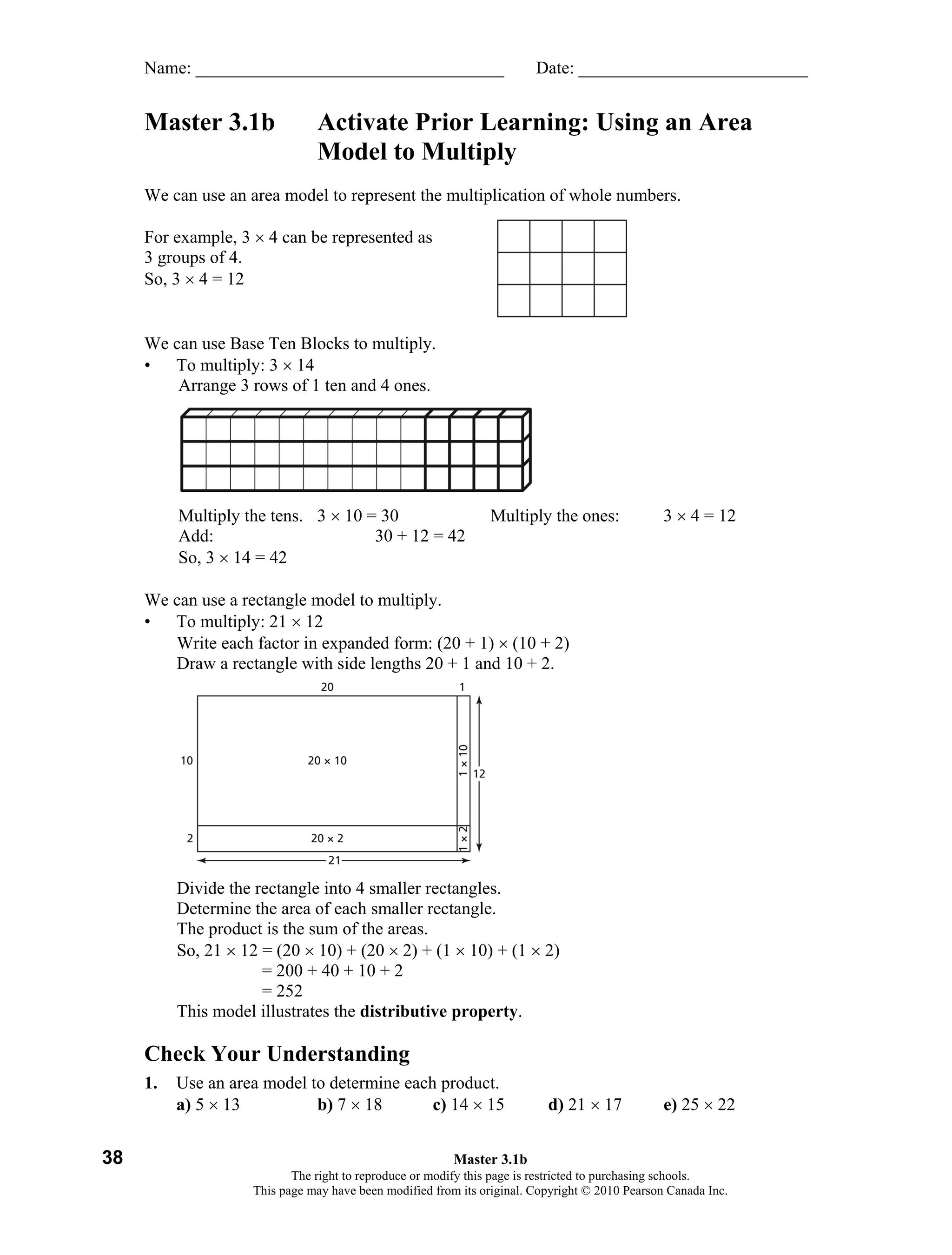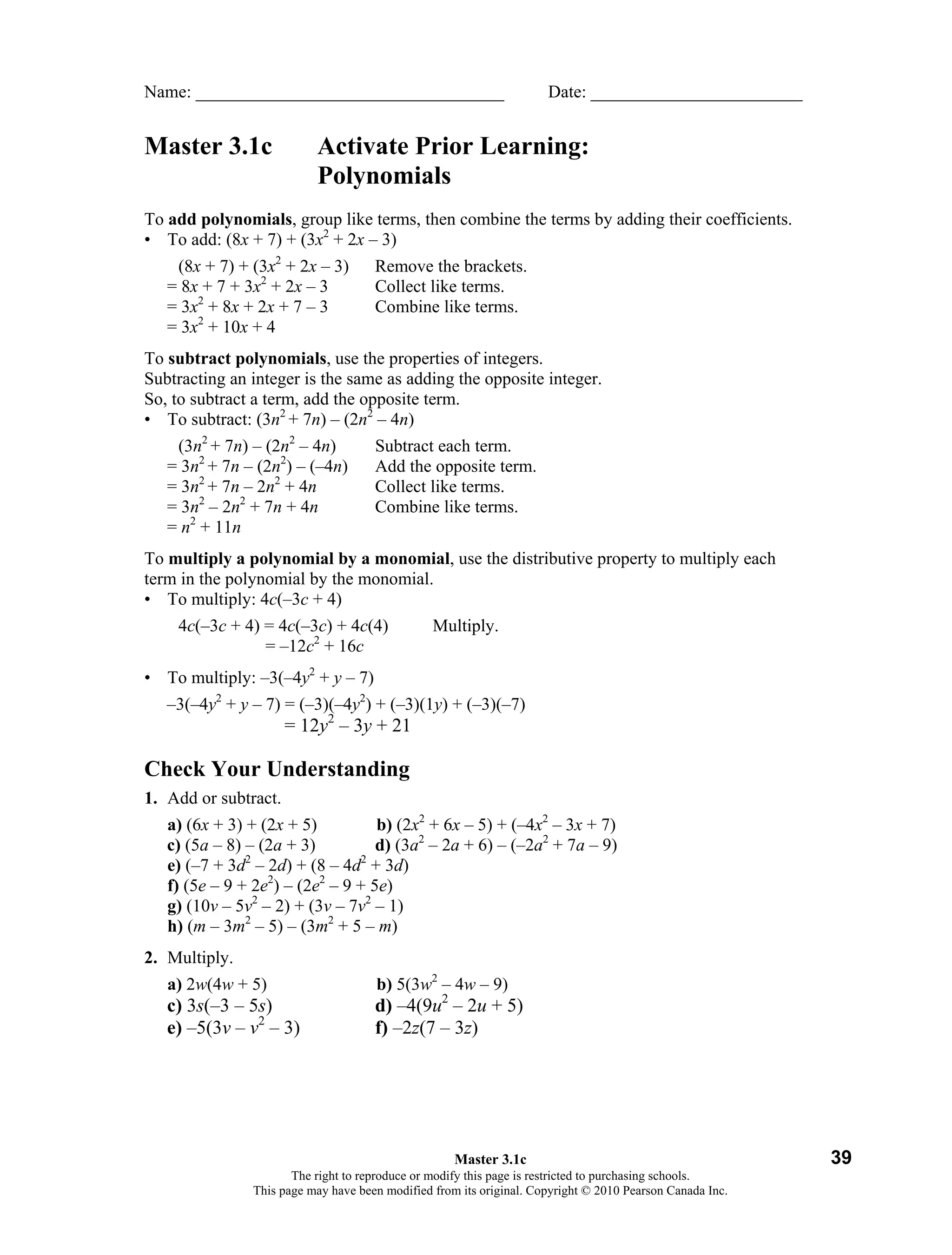This document provides examples and explanations of factors, multiples, common factors and multiples, prime numbers, and using area models and the distributive property to multiply polynomials. It includes examples of adding, subtracting, and multiplying polynomials. Check your understanding questions are provided to have students practice these skills.


